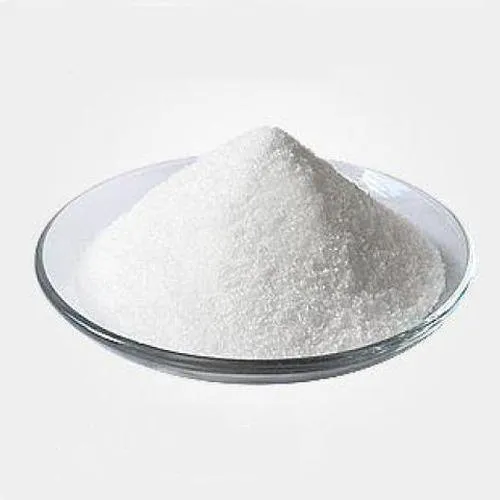- The process of creating a drug - May 23, 2023
- How do scientists model mental disorders in animals? - May 23, 2023
Introduction
Ibuprofen (isobutylphenyl propionic acid) CAS 15687-27-1 is a derivative of propionic acid. It’s a nonsteroidal anti-inflammatory drug. It was introduced in 1969 as a safer alternative to Aspirin. Its primary use is for pain relief, fever reduction, and inflammation management. Ibuprofen is used to alleviate pain from various conditions such as headaches, dental pain, menstrual cramps, muscle aches, arthritis, and post-surgery pain. It is also effective in reducing fever associated with various illnesses, including the common cold and flu. Additionally, ibuprofen is utilized to manage inflammation caused by conditions like osteoarthritis, rheumatoid arthritis, and juvenile idiopathic arthritis. Its anti-inflammatory properties make it a valuable drug for treating conditions that involve inflammation and pain.
The synthesis of ibuprofen involves several chemical steps that convert the starting materials into the final product. One traditional method for synthesizing ibuprofen involves a six-step process that starts with isobutylbenzene. However, a more modern and environmentally friendly technique has been developed that reduces the synthesis to just three stages. This article discusses three-step methods for the synthesis of ibuprofen. As well as its chemical reactions, physical properties, applications, health effects and safety precautions.

Physical and Chemical Properties of Ibuprofen
Ibuprofen CAS 15687-27-1, isobutylphenyl propionic acid, CAS 15687-27-1 is a derivative of propionic acid with a chemical formula C13H18O2 and a molecular weight 206.285 g/mol. Ibuprofen is an odorless crystalline powder with a slightly bitter taste. Its crystalline form has a high melting point is 75 to 78 °C (167 to 172 °F) and its boiling point is 157 °C (315 °F) at 4 mmHg. Its density at room temperature is 1.03 g/cm3. Soluble in ethanol, chloroform, and ether. Solubility in water is 0.021 mg/mL at 20 °C.
Chemically, ibuprofen is characterized by its carboxylic acid functional group. This acidic group also allows for chemical modifications, leading to the synthesis of various esters and salts of ibuprofen to improve its pharmacokinetic properties.
Synthesis of Ibuprofen
The synthesis of ibuprofen CAS 15687-27-1 was first achieved by the Boots Pure Chemical Company.
BHC method for synthesizing ibuprofen
In pursuit of more environmentally friendly and cost-effective processes, a significant advancement was made with the development of the “Hoechst-Celanese” process. This innovative approach reduces the synthesis of ibuprofen to three steps:
Isobutylbenzene reacts with acetic anhydride to form 4-isobutylacetophenone using a anhydrous hydrogen fluoride catalyst. 4-Isobutylacetophenone hydrogenated in the presence of a Raney-Ni catalyst to form 1-(4-isobutylphenyl) ethanol. Finally, 1-(4-isobutylphenyl) ethanol reacts with carbon monoxide with palladium catalyst to yield ibuprofen.



Another synthesis of ibuprofen was accomplished through three steps too. Initially, isobutylbenzene and acetyl chloride with aluminium chloride create p-isobutylacetophenone. P-isobutylacetophenone with sodium borohydride and hydrogen chloride form 1-cloro-1-(4-isobutylphenyl)ethane. In next step, 1-cloro-1-(4-isobutylphenyl)ethane with magnesium and carbon dioxide yield ibuprofen.




Chemical Reactions of Ibuprofen
This chapter explores the chemical reactions of ibuprofen CAS 15687-27-1, providing examples of its reactivity and applications.
Esterification
Esterification is a common reaction involving the carboxylic acid group of ibuprofen CAS 15687-27-1, which can increase the drug’s solubility and absorption characteristics. Reaction of ibuprofen with ethanol in the presence of a catalyst like dicyclohexylcarbodiimide forms ibuprofen ethyl ester. This modification can affect the drug’s pharmacokinetics by altering its solubility and distribution.

Salt Formation
The formation of salts is critical for modifying the drug’s solubility and bioavailability. Ibuprofen CAS 15687-27-1 is often used as a sodium or potassium salt to increase its water solubility. Neutralization of ibuprofen’s carboxylic acid group with sodium hydroxide leads to the formation of sodium ibuprofen, which is more soluble in water than the parent compound.

Halogenation
Ibuprofen can react with thionyl chloride to obtain acyl chloride derivative, 2-(4-Isobutylphenyl) propanoyl chloride. The reaction is carried out in the presence of dichloromethane.


Applications of Ibuprofen
Ibuprofen CAS 15687-27-1, widely known for its medicinal uses, is also attracting significant interest in chemical research and development. This non-steroidal anti-inflammatory drug (NSAID), in addition to its clinical use, serves as a versatile molecule for studying chemical processes and exploring new drug delivery systems.
Polymer Science
The incorporation of ibuprofen into polymers has sparked interest in the development of long-acting dosage forms. This approach uses chemical interactions between ibuprofen and polymer matrices to modulate the rate of drug release, increasing its therapeutic efficacy and patient compliance.
The development of biodegradable polymers with ibuprofen for controlled drug release is an example of the intersection of polymer science and pharmacology to optimize dosing regimens and reduce side effects.

Health Effects of Ibuprofen
Ibuprofen CAS 15687-27-1 is a widely used nonsteroidal anti-inflammatory drug, but long-term use of ibuprofen can cause side effects such as stomach ulcers, hearing loss, headaches and bleeding, and liver, kidney, or heart problems. May cause skin and eye irritation on contact.
The most common side effect of ibuprofen is stomach upset or discomfort. Ibuprofen CAS 15687-27-1 should not be given to people who are taking any of the following medications: aspirin, methotrexate, warfarin, or other blood thinners.
Dehydration plays an important role in kidney damage, so ibuprofen should not be given to patients with diarrhea and vomiting.

Safety Precautions
Although ibuprofen CAS 15687-27-1 is widely known for its medical uses, its handling in chemical research, manufacturing and laboratory settings requires safety precautions. Ensuring the safe handling of ibuprofen in these environments is paramount to preventing exposure risks and ensuring laboratory safety. This chapter contains basic precautions when handling ibuprofen in chemical environments and provides recommendations for reducing potential hazards.
Personal protective equipment (PPE):
Eye protection
When handling ibuprofen powder or solution, be sure to wear safety goggles to prevent eye irritation or eye damage from accidental splashes.
Gloves
To protect your skin from direct contact with ibuprofen, which can cause irritation or allergic reactions in sensitive people, you should wear chemical-resistant gloves such as nitrile or latex.
Protective clothing
Laboratory coats or protective aprons should be worn to prevent contamination of personal clothing and skin.
Ventilation
Handling ibuprofen, especially during processes that generate dust or aerosols, should be done in a well-ventilated area or under a chemical fume hood. Ventilation reduces the risk of inhaling small particles that can irritate the respiratory tract.
Handling and storage
Ibuprofen should be stored in a cool, dry place, away from incompatible substances.
Make sure to store ibuprofen in containers with tight-fitting lids to minimize exposure to air and moisture, which may affect its stability and effectiveness.
First aid measures
Skin contact
If ibuprofen contact with your skin, wash the area with soap and water. Seek medical attention if irritation persists.
Eye contact
In case of contact with eyes, rinse eyes with plenty of water for at least 15 minutes and consult a doctor.
Conclusion
In conclusion, ibuprofen CAS 15687-27-1 is a widely used nonsteroidal anti-inflammatory drug (NSAID) with varied properties, uses, and reactions. It is commonly used to relieve pain, reduce fever, and treat inflammation in various diseases. The chemical properties of ibuprofen make it practically insoluble in water, but very soluble in organic solvents such as ethanol, chloroform, and ether. Its synthesis involves several steps and usually starts with isobutylbenzene.
However, caution should be exercised when using ibuprofen. Additionally, due to the potential risks, ibuprofen should be avoided by those who drink alcohol or aspirin.
Overall, the properties, reactions and uses of ibuprofen make it a valuable medicine for relieving pain, inflammation and reducing fever. Its chemical structure, pharmacokinetics and therapeutic effects contribute to its widespread use in the medical field.
Bibliography
- Ibuprofen Thomas G. Kantor, M.D. Annals of Internal Medicine Volume 91, Number 6 https://doi.org/10.7326/0003-4819-91-6-877
- Synthesis of Ibuprofen in the Introductory Organic Laboratory Richard A. Kjonaas, Peggy E. Williams, David A. Counce, and Lindsey R. Crawley J. Chem. Educ. 2011, 88, 6, 825–828 April 5, 2011 https://doi.org/10.1021/ed100892p
- Synthesis and Study of Analgesic and Anti-inflammatory Activities of Amide Derivatives of Ibuprofen Ahmadi, Abbas; Khalili, Mohsen; Olama, Zahra; Karami, Shirin; Nahri-Niknafs, Babak Mini Reviews in Medicinal Chemistry, Volume 17, Number 9, 2017, pp. 799-804(6) https://www.ingentaconnect.com/content/ben/mrmc/2017/00000017/00000009/art00009
- Properties of Ibuprofen Crystallized Under Various Conditions: A Comparative Study N. RasenackDepartment of Pharmaceutics and Biopharmaceutics, Christian Albrecht University Kiel, Gutenbergstr. 76, Kiel, 24118, Germany &B. W. Müller Pages 1077-1089 | Published online: 10 Aug 2002 https://doi.org/10.1081/DDC-120014575
- Ibuprofen: Discovery, Development and Therapeutics K. D. Rainsford John Wiley & Sons, 25 2015 Pages 624 https://books.google.com/books?id=CAcLCgAAQBAJ


